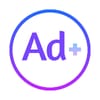How Publishers Can Increase Ad Revenue by Preventing Ad Blocking

Ad blocking is a growing problem for publishers. According to a study by PageFair, 28% of internet users worldwide use ad blockers. This means that publishers are losing out on a significant amount of revenue.
There are a number of reasons why people use ad blockers. Some people find ads to be intrusive and annoying. Others are concerned about their privacy and don't want their online activity tracked by advertisers. And still others are simply looking to improve the performance of their devices by blocking unnecessary scripts and resources.
Whatever the reason, ad blocking is a major challenge for publishers. But there are a number of things that publishers can do to prevent ad blocking and increase their ad revenue.
1. Use Acceptable Ads
Acceptable Ads is a program that allows publishers to display non-intrusive ads to users who have ad blockers enabled. The ads that are allowed are carefully vetted to ensure that they are not annoying or disruptive.
Publishers who participate in the Acceptable Ads program can display a badge on their website that tells users that they are using non-intrusive ads. This can help to convince users to whitelist the publisher's website, so that they can continue to see ads.
2. Use Native Ads
Native ads are ads that are designed to blend in with the surrounding content. They are often more effective than traditional banner ads, because they are less likely to be blocked by users.
Publishers can use native ads to promote their own products or services, or to promote the products or services of their advertisers. Native ads can be placed in a variety of locations on a publisher's website, including in the sidebar, in the middle of an article, or even in the form of a sponsored article.
3. Use Ad Tech Solutions
There are a number of ad tech solutions that can help publishers to prevent ad blocking and increase their ad revenue. These solutions use a variety of techniques to detect and block ad blockers, and to ensure that ads are displayed in a way that is not annoying or disruptive to users.
Some of the most popular ad tech solutions include:
- AdBlock Detector: This solution detects and blocks ad blockers, and allows publishers to show a message to users who have ad blockers enabled.
- AdGuard: This solution blocks ad blockers and other malicious software.
- Ghostery: This solution blocks tracking scripts and other privacy-invading technologies.
4. Offer Incentives for Users to Disable Ad Blockers
Some publishers offer incentives to users to disable their ad blockers. This could include giving users access to exclusive content, discounts on products or services, or even a donation to a charity of the user's choice.
Incentive programs can be a cost-effective way to prevent ad blocking and increase ad revenue. However, it is important to make sure that the incentives are valuable enough to convince users to disable their ad blockers.
5. Educate Users About the Importance of Ads
Many users who use ad blockers are not aware of the impact that their actions have on publishers. Publishers can educate users about the importance of ads by creating blog posts, infographics, or even videos that explain how ads help to fund the content that they enjoy.
By educating users about the importance of ads, publishers can help to change their perception of ads and encourage them to whitelist their websites.
Conclusion
Ad blocking is a growing problem for publishers, but there are a number of things that they can do to prevent ad blocking and increase their ad revenue. By using Acceptable Ads, native ads, ad tech solutions, and incentives, publishers can convince users to whitelist their websites and continue to see ads.
In addition to the strategies mentioned above, publishers can also try to improve the overall user experience of their websites. This includes making sure that websites are fast loading, easy to navigate, and free of annoying or intrusive ads. By providing a good user experience, publishers can make it less likely that users will turn to ad blockers in the first place.
By taking steps to prevent ad blocking, publishers can protect their revenue and continue to provide high-quality content to their users.
